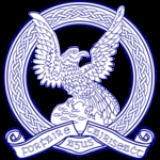
Irish Air Corps
Overview
Republic of Ireland
Ireland , described as the Republic of Ireland , is a sovereign state in Europe occupying approximately five-sixths of the island of the same name. Its capital is Dublin. Ireland, which had a population of 4.58 million in 2011, is a constitutional republic governed as a parliamentary democracy,...
providing support to the Army
Irish Army
The Irish Army, officially named simply the Army is the main branch of the Defence Forces of Ireland. Approximately 8,500 men and women serve in the Irish Army, divided into three infantry Brigades...
and Naval Service
Irish Naval Service
The Naval Service is the navy of Ireland and is one of the three standing branches of the Irish Defence Forces. Its main base is in Haulbowline, County Cork....
, together with non-military air services such as search and rescue
Search and rescue
Search and rescue is the search for and provision of aid to people who are in distress or imminent danger.The general field of search and rescue includes many specialty sub-fields, mostly based upon terrain considerations...
and the Ministerial Air Transport Service. The principal airbase is Casement Aerodrome
Casement Aerodrome
Casement Aerodrome or Baldonnel Aerodrome is a military airbase to the south west of Dublin, Ireland situated off the N7 main road route to the south and south west. It is the headquarters and the sole base of the Irish Air Corps, and is also used for other government purposes...
located at Baldonnel
Baldonnel, Ireland
Baldonnel , is a townland, and industrial/agricultural area near Clondalkin Tallaght, Lucan, Saggart and Naas, in west County Dublin. It is chiefly known as the location of the headquarters of the Irish Air Corps at Casement Aerodrome, Baldonnel, which has been in operation for over 90 years in...
.
During the Anglo-Irish Treaty
Anglo-Irish Treaty
The Anglo-Irish Treaty , officially called the Articles of Agreement for a Treaty Between Great Britain and Ireland, was a treaty between the Government of the United Kingdom of Great Britain and Ireland and representatives of the secessionist Irish Republic that concluded the Irish War of...
talks of 1921, a Martinsyde Type A Mark II
Martinsyde Buzzard
The Martinsyde F.4 Buzzard was developed as a powerful and fast biplane fighter for the Royal Air Force , but the end of the First World War led to the abandonment of large-scale production. Fewer than 400 were eventually produced, with many exported...
biplane
Biplane
A biplane is a fixed-wing aircraft with two superimposed main wings. The Wright brothers' Wright Flyer used a biplane design, as did most aircraft in the early years of aviation. While a biplane wing structure has a structural advantage, it produces more drag than a similar monoplane wing...
was purchased and put on 24-hour standby at Croydon
Croydon
Croydon is a town in South London, England, located within the London Borough of Croydon to which it gives its name. It is situated south of Charing Cross...
airport in order to allow Michael Collins
Michael Collins (Irish leader)
Michael "Mick" Collins was an Irish revolutionary leader, Minister for Finance and Teachta Dála for Cork South in the First Dáil of 1919, Director of Intelligence for the IRA, and member of the Irish delegation during the Anglo-Irish Treaty negotiations. Subsequently, he was both Chairman of the...
to escape back to Ireland
Ireland
Ireland is an island to the northwest of continental Europe. It is the third-largest island in Europe and the twentieth-largest island on Earth...
if the talks failed.

